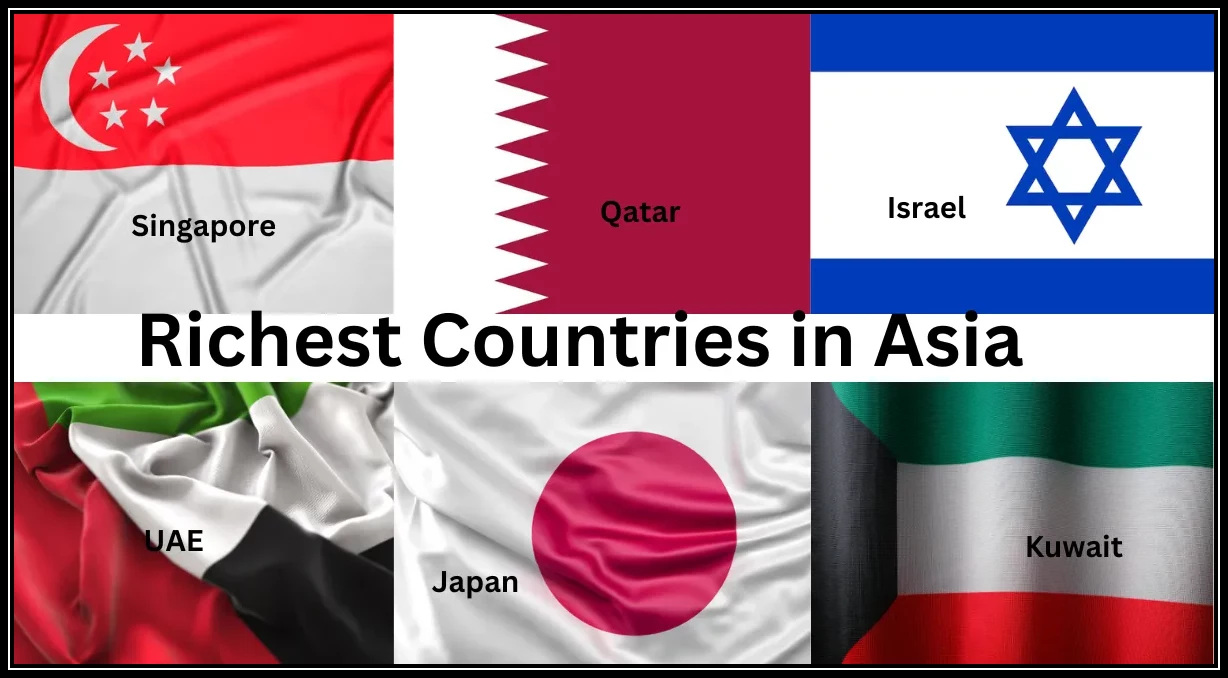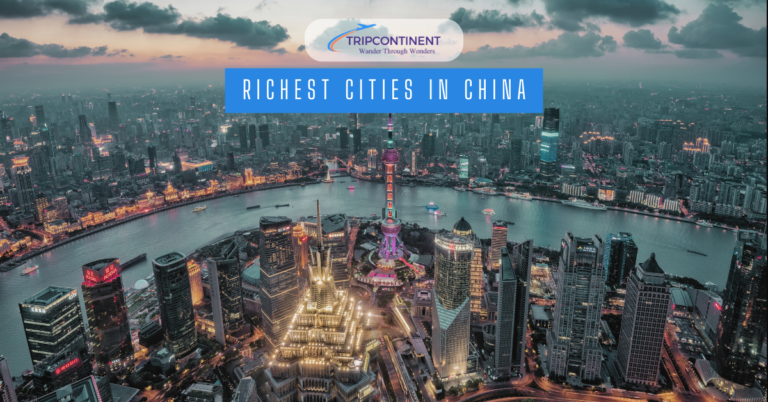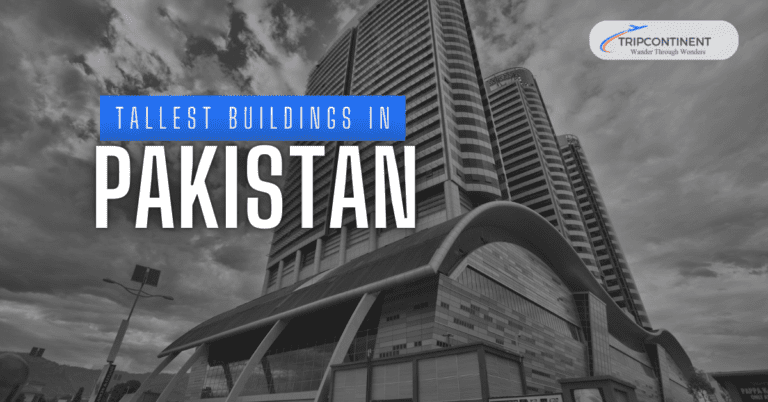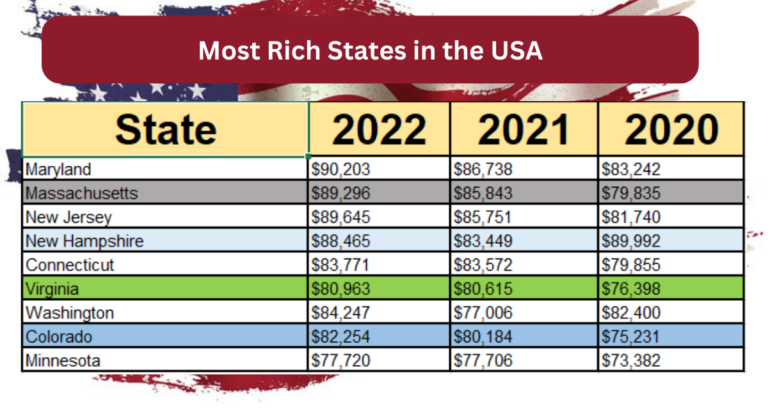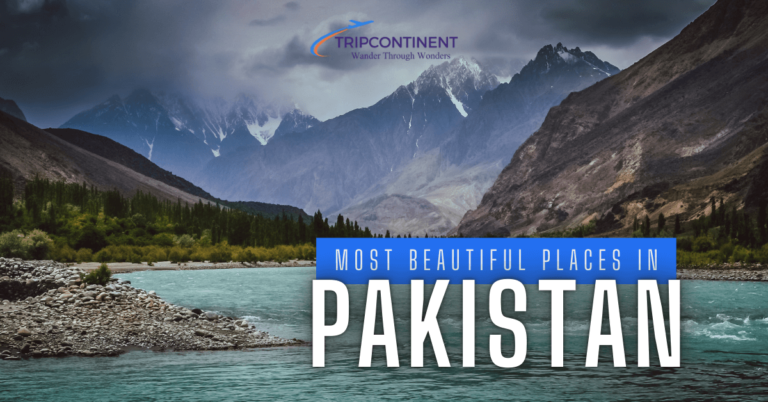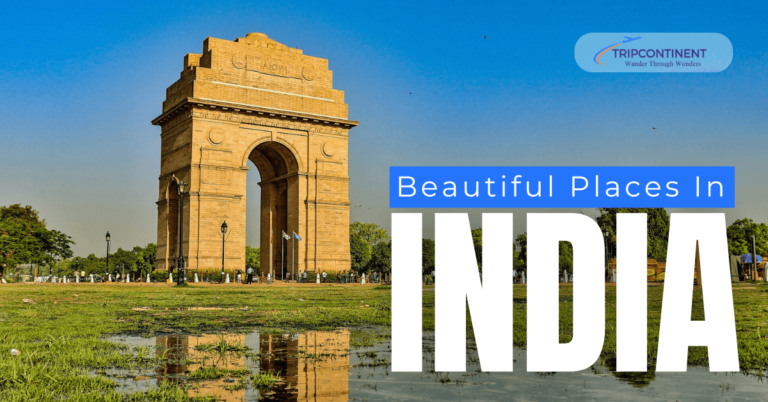Discovering The 10 Richest Countries In Asia in 2024
Throughout history, Asia has been a center of trade, innovation, and economic power. Today, this trend continues, with a remarkable rise in wealthy nations across the continent. These countries boast impressive economic growth, high standards of living, and significant influence on the global stage.
This blog will delve into the factors driving wealth in the Richest Countries in Asia. We’ll explore how a combination of resource abundance, strategic economic planning, investment in human capital, and technological advancements have propelled these nations to the forefront of global prosperity.
From the powerhouses of East Asia to the strategically located economies of the Middle East, we’ll uncover the unique recipe for success that each country has developed. By examining these diverse approaches, we can gain valuable insights into the future of wealth creation in Asia and beyond.
List Of The Top 10 Richest Countries In Asia
The following is the list of the top 10 Richest Countries in Asia:
- Singapore
- Qatar
- United Arab Emirates
- Bahrain
- Saudi Arabia
- Israel
- Kuwait
- Cyprus
- Japan
- Oman
1. Singapore
Singapore’s story is an amazing example of turning things around. Once a developing country after gaining independence, it’s now one of the richest nations in Asia.
Singapore sits in a prime spot for trade, like a busy crossroads of the sea. Ships from all over the world stop at its famous port, making it one of the busiest in the world. This location has been a huge advantage for Singapore’s economy.
The government, led by strong leadership, made smart choices to boost the economy. They focused on building factories (industrialization) to create jobs and also invested heavily in education and infrastructure (roads, bridges, etc.) to create a skilled workforce and a smooth-running country.
Singapore places a lot of importance on education. Their universities are world-class, and their people are highly trained. This skilled workforce is a major asset that attracts businesses to set up shop in Singapore.
Singapore is known for being a great place to do business. The government keeps things fair and efficient, with low corruption and clear rules. They also have competitive taxes, making it attractive for companies to invest their money there.
Singapore’s economy isn’t all about one thing. It’s diversified, meaning it has many successful industries, like finance, manufacturing, technology, and even medicine. This diversity helps to keep the economy stable, even if one industry takes a hit.
All of this success translates into a great quality of life for Singapore’s citizens. The high GDP per capita (a measure of average wealth) shows that Singaporeans enjoy a high standard of living.
Singapore’s wealth is also managed carefully by special government funds that invest money all over the world. This ensures the country has a secure financial future.
In short, Singapore’s success is a combination of smart leadership, a strategic location, a focus on education and skills, a business-friendly environment, and a diversified economy. This combination has transformed Singapore from a developing nation to a global economic powerhouse.
Also read: Largest Cities in the United States
2. Qatar
Qatar’s story is one of amazing transformation. Despite being a small country with a population of around 2.8 million, it’s become incredibly wealthy.
Qatar struck gold, well, natural gas to be precise. They have the world’s third-largest natural gas reserves, making them a major exporter. This “gas boom” completely changed Qatar’s economy, moving it away from activities like pearl diving and fishing.
Qatar discovered and started using its massive oil and gas reserves in the 1970s. This fueled their economy, making them a leader in exporting liquefied natural gas (LNG). Their income from these resources is huge, funding fancy buildings, transportation systems, and even hosting big events like the 2022 FIFA World Cup.
Qatar is smart about its wealth. They have a bank called the Qatar Investment Authority (QIA) which holds over $300 billion. This money is invested all over the world, in things like real estate and businesses, ensuring a steady stream of income for the future.
Qatar isn’t just about money; they also invest in their people. They’ve built a strong healthcare system, and excellent educational facilities like Qatar University, and even have a whole city dedicated to education called Education City.
Qatar wants businesses to set up shop there. They have low taxes and special zones with even fewer restrictions, making it attractive for companies to invest.
Qatar knows its oil and gas won’t last forever. Their “Vision 2030” plan focuses on diversifying their economy, so they’re not reliant on just one resource. They’re looking to grow industries like finance, tourism, and manufacturing.
In a nutshell, Qatar’s wealth comes from a massive amount of natural gas, smart investments around the world, impressive infrastructure development, and a government focused on long-term economic success for its people.
3. United Arab Emirates
The United Arab Emirates (UAE) is known for its wealth and impressive growth. The UAE is lucky to have a lot of oil, ranking 7th in the world for oil reserves. This “black gold” fueled the country’s development, especially in Abu Dhabi, which has most of the oil. However, the UAE isn’t just about oil anymore.
The UAE realized oil won’t last forever, so they’ve been smart about diversifying their economy. Today, over 70% of their income comes from things other than oil, like tourism, aviation, and fancy real estate. Dubai, a famous city in the UAE, is a prime example – it’s become a global hub for business and tourism, known for its skyscrapers, luxury shopping, and top-notch infrastructure. With a GDP per capita of $43,000 in 2023, the UAE offers a high standard of living for its people.
The UAE hasn’t just focused on making money; they’ve also invested heavily in building their country. They’ve constructed some amazing structures like the Burj Khalifa, the world’s tallest building, and the Palm Jumeirah, a man-made island shaped like a palm tree! They’ve also built world-class ports and airports to keep trade and tourism flowing smoothly.
The UAE is good at saving money too. They have huge investment funds, like the Abu Dhabi Investment Authority, which hold billions of dollars. This money is invested all over the world, ensuring a steady stream of income for the future.
The UAE government cares about its citizens’ well-being. They’ve invested in healthcare, and education, and created plans like “UAE Vision 2021” to make the country a leader in innovation and sustainability.
The UAE welcomes businesses with open arms. They have low taxes, special zones with even fewer restrictions, and a great location for trade. This makes them a magnet for companies from all over the world.
In short, the UAE’s wealth comes from a combination of oil riches, smart investments in other industries, impressive infrastructure projects, and a future-oriented government focused on long-term success for its people.
Also read: Most Rich States in the USA
4. Bahrain
Bahrain’s success story in Asia is all about location, resources, and smart planning. Bahrain was lucky to discover oil early on, back in 1932 (the first in the Gulf region). While they don’t have the biggest reserves, oil and gas are still important for their government income and exports.
Bahrain knew oil wouldn’t last forever, so they’ve been smart about diversifying their income. Today, their economy isn’t just about oil – finance is a big player, contributing over 17% to their income. Manama, the capital city, is a major financial center in the Middle East, with over 400 banks and insurance companies calling it home. With a GDP per capita of $26,000 in 2023, Bahrain offers a good standard of living for its citizens.
Bahrain has invested heavily in infrastructure, like a modern airport, road networks, and even a racetrack for Formula 1. This makes it easier for people and goods to move around, boosting tourism and trade.
Just like other wealthy countries, Bahrain has a sovereign wealth fund called Mumtalakat Holding Company. This fund manages over $15 billion, invested in various sectors to ensure long-term economic stability.
Bahrain prioritizes its citizens’ well-being. They’ve invested in healthcare, education, and housing, resulting in a high literacy rate and a strong healthcare system. They also have plans like “Bahrain Vision 2030” to keep improving the economy and life quality for everyone.
Bahrain welcomes businesses with open arms. Low taxes, free trade deals, and a clear and simple legal system make it attractive for companies to set up shop there.
Bahrain sits in a prime spot in the Persian Gulf, close to major markets in the Middle East. This makes it a natural choice for companies looking to move goods around the region.
In a nutshell, Bahrain’s wealth comes from a combination of using its oil resources wisely, diversifying its economy, building good infrastructure, and creating a business-friendly environment. They also focus on the well-being of their citizens, making Bahrain a resilient and prosperous nation.
5. Saudi Arabia
Saudi Arabia’s wealth is like a big treasure chest filled with different things. Saudi Arabia sits on a massive amount of oil, the second most in the world. This “black gold” has been their main source of income for a long time. Oil sales make up half of their economy, most of their exports, and almost all their government income.
Back in the day, Saudi Arabia was mostly focused on farming. Then, in 1938, they discovered oil, and everything changed. They created a great oil company called Saudi Aramco, and their economy boomed. Today, they’re a major player in the global economy.
Thanks to all that oil money, Saudi Arabia has a high GDP per capita, meaning their citizens have a good standard of living. In 2023, their GDP per capita was around $23,000. Their entire economy, at $833 billion, is the biggest in the Middle East.
Saudi Arabia knows oil won’t last forever, so they have a plan called “Vision 2030” to diversify their income. This means they’re focusing on growing new areas of their economy, like tourism, entertainment, finance, and even renewable energy. They also have a huge investment fund called the PIF to help pay for these new ventures.
Saudi Arabia has invested heavily in building their country. They’ve created modern transportation systems, ports, and even entire industrial cities! They’re also planning a futuristic city called NEOM, powered by clean energy.
Saudi Arabia is making changes to improve the lives of its citizens. They’re giving women more rights and investing more in education and healthcare. They also have a young and growing population, so they’re putting a lot of focus on education for future generations.
Saudi Arabia wants more businesses to set up shop there. They’re making it easier for foreign companies to invest by changing their laws and offering special deals. Since it sits at a crossroads between Asia, Europe, and Africa, it’s a great location for trade too.
Just like other wealthy countries, Saudi Arabia has a sovereign wealth fund called the PIF. This fund invests money all over the world in different things, ensuring a steady stream of income for the future.
Saudi Arabia’s wealth comes from a combination of its massive oil reserves, smart investments in new industries, impressive infrastructure projects, and a focus on improving the lives of its people. Their “Vision 2030” plan is set to transform their economy even further, making them less reliant on oil and more prepared for the future. This all adds up to make Saudi Arabia one of the richest countries in Asia.
You might also like: The Best Places To Live In Alabama
6. Israel
Israel’s story is one of amazing progress. Despite challenges like limited natural resources, they’ve become a wealthy and successful nation in Asia.
Israel is a hub for creative ideas and new businesses, often nicknamed the “Startup Nation.” With over 6,000 startups, they have one of the highest numbers per person in the world. These startups focus on cutting-edge technologies like cybersecurity, software development, and even medicine, all contributing significantly to Israel’s economy.
Since its founding in 1948, Israel has faced difficulties. However, they’ve turned things around through smart planning and investing in their people’s education and skills (human capital). They’ve become a leader in high-tech industries thanks to their focus on research and development (R&D) and innovation.
Israelis enjoy a good quality of life, reflected in their high GDP per capita of $48,000 in 2023. Their overall economy, at $518 billion, is strong and keeps growing steadily, with low unemployment rates.
Israel prioritizes education, with a literacy rate exceeding 97%. Renowned universities like the Technion and the Hebrew University are known worldwide for their research and innovation. This highly educated workforce fuels their success in high-tech and entrepreneurial ventures.
Foreign companies are drawn to Israel’s advanced technology sector and stable business environment. Big names like Google, Intel, and Microsoft even have R&D centers there. Israel’s location also makes trade easy, especially with Europe and Asia.
The defense and security industry plays a major role in Israel’s economy. They’re a top exporter of military technology, including drones and cybersecurity solutions. This sector not only keeps them safe but also generates significant income.
Israel invests heavily in infrastructure, like transportation systems, communication networks, and even energy. This keeps everything connected and supports economic activity. Projects like the Tel Aviv light rail show their commitment to progress.
The Israeli government actively encourages innovation through programs and financial help. Their Israel Innovation Authority even gives grants and funding to startups and research projects. A thriving venture capital scene also fuels the growth of new businesses.
In a nutshell, Israel’s wealth comes from its cutting-edge technology sector, a strong emphasis on education, a culture of innovation, and a government that supports these efforts. Their focus on research and development, a highly skilled workforce, and significant foreign investment solidify Israel’s position as one of the richest countries in Asia.
7. Kuwait
Kuwait’s story is one of amazing transformation. They have a massive amount of oil, ranking sixth in the world. This “black gold” is what fuels their economy. Oil sales make up half of their entire income (GDP) and a whopping 90% of the money their government gets.
Before oil, Kuwait’s economy relied on trading and pearl diving. The discovery of oil in the 1930s completely changed everything. Since gaining independence in 1961, Kuwait has used its oil wealth to develop rapidly. They’ve built modern infrastructure, improved healthcare, and invested heavily in education.
Thanks to their oil income, Kuwaitis enjoy a good quality of life. In 2023, their GDP per capita was around $32,000. Their entire economy is valued at $143 billion. This wealth allows them to offer generous social programs for their citizens.
Kuwait is smart about its money. They have the Kuwait Investment Authority (KIA), one of the biggest in the world, with over $700 billion invested around the globe. This ensures a steady stream of income for the future, even when the oil runs out.
Kuwait isn’t just about oil riches; they’re also investing in their future. They’ve built new cities, modern transportation systems, and even upgraded their main airport. These projects are all about making Kuwait a more modern and connected country.
While oil is still important, Kuwait knows it won’t last forever. Their “Vision 2035” plan focuses on diversifying their economy, so they’re not reliant on just oil. They’re investing in areas like finance, real estate, and tourism to create new income sources.
Education is a priority in Kuwait. They’ve invested heavily in schools, universities, and job training programs. This has led to a high literacy rate and a well-educated workforce. The government even offers scholarships for students to study abroad.
Kuwait wants businesses to set up shop there. They have low taxes and are making it easier for foreign companies to invest. This is all about attracting new businesses and creating more jobs.
Kuwait’s wealth comes from a combination of its massive oil reserves, smart investments, impressive infrastructure projects, and a focus on preparing for the future. Their efforts to diversify their economy and invest in their people will ensure Kuwait’s continued success for years to come.
8. Cyprus
Cyprus isn’t your average island paradise. Sure, it has beautiful beaches and a rich history, but it’s also become a wealthy and successful country in Asia.
Cyprus sits at a meeting point of Europe, Asia, and Africa. This prime location has made it a key trading center for centuries. Their ports handle a massive amount of ship traffic, making them a vital hub for moving goods around the world.
Tourism is a big part of the Cypriot economy, but it’s not the only player. The services sector, which includes things like finance and shipping, is the real powerhouse, contributing around 80% of their income (GDP). Millions of tourists flock to Cyprus every year to enjoy the sunshine, historical sites, and beautiful beaches. Tourism alone brings in over 20% of their GDP.
Cyprus is a magnet for international businesses, especially those in finance. They have a very attractive tax system, with one of the lowest corporate tax rates in Europe. This, along with a strong legal system and a welcoming business environment, makes Cyprus an ideal place for companies to set up shop.
Since gaining independence in 1960, Cyprus has focused on diversifying its economy, not relying on just one or two things. The discovery of natural gas reserves offshore has been a big boost too, making them a new player in the energy game.
Cypriots enjoy a good quality of life, with a GDP per capita of around $32,000 in 2023. Their entire economy is valued at $27 billion, and this stability is reflected in their high ranking on the Human Development Index (HDI).
Cyprus has one of the biggest fleets of merchant ships in the world. They’re a major player in managing ships globally, and their maritime industry is a significant contributor to their economy.
Education is a priority in Cyprus. With a literacy rate exceeding 98%, they have a well-educated and multilingual workforce that supports all areas of their economy. The government puts a lot of money into education to ensure a skilled workforce for the future.
Cyprus isn’t stopping there! They’re constantly working on diversifying their economy even further, especially with the development of their natural gas reserves. This has the potential to fuel even more economic growth in the years to come.
9. Japan
Japan’s story is one of amazing recovery and growth. After World War II, they went from a devastated nation to a global economic leader.
Japan’s economic success began after World War II. They rebuilt quickly, focusing on industries like cars and electronics. By the 1960s and 70s, they were world-famous for their high-quality products.
Today, Japan has the world’s 3rd largest economy, valued at around $5 trillion in 2023. This means they produce a massive amount of goods and services. With a GDP per capita of $40,000, their citizens enjoy a high standard of living.
Japan is a hotbed for new technology. They invest heavily in research and development (R&D) to create cutting-edge products. From robotics and cars to electronics and machinery, Japan is a leader in many fields. Companies like Sony, Toshiba, and Canon are constantly pushing the boundaries of what’s possible.
Education is a priority in Japan. With a literacy rate near 100%, they have a highly skilled workforce. Japanese students consistently rank high in international tests, and universities like Tokyo and Kyoto are world-renowned.
Japan has some of the most advanced infrastructure in the world. Their bullet trains, efficient public transportation systems, and well-maintained roads and bridges keep everything connected and running smoothly. This makes it easier to move goods and people around, boosting the economy and improving lives.
The Japanese government has played a big role in their economic success. By supporting key industries, encouraging exports, and promoting innovation, they’ve helped businesses thrive.
Japan is a major exporter, selling cars, machinery, electronics, and chemicals around the world. They also have a lot of investments in other countries, which brings in even more income. All this global trade strengthens their economy.
Japan has a strong work ethic, a focus on quality, and a culture of continuous improvement (kaizen). These values help them produce excellent products and constantly strive to be better.
Japan’s wealth comes from a combination of advanced industries, cutting-edge technology, a skilled workforce, and impressive infrastructure. Strategic government policies, a global trade network, and strong cultural values all contribute to Japan’s position as one of the richest countries in Asia.
Also read: Landlocked States In The USA
10. Oman
Oman’s story is one of smart planning and using its resources wisely. Oman has a lot of oil and natural gas, which are like buried treasure. These resources account for about 60% of the government’s income. The money from oil has helped Oman develop rapidly in recent decades.
Before oil, Oman’s economy relied on farming. In the 1960s, they discovered oil, and things changed dramatically. Since then, Oman has invested heavily in building infrastructure, improving healthcare and education, and overall, making life better for its citizens.
Omanis enjoy a good quality of life, with a GDP per capita of around $18,000 in 2023. Their entire economy is valued at $90 billion. The government uses this wealth to invest in things like hospitals, schools, and affordable housing.
While oil is important, Oman knows it won’t last forever. Their “Vision 2040” plan focuses on diversifying their economy, so they’re not reliant on just oil. They’re investing in areas like tourism, shipping, manufacturing, and even fishing to create new income sources.
Oman has invested heavily in infrastructure projects, like improving roads, ports, and airports. This makes it easier to move goods and people around the country and attract businesses to invest. The expansion of their main port and the development of a special economic zone are good examples.
Tourism is a growing industry in Oman. With beautiful scenery, a rich history, and luxurious resorts, they’re attracting more and more visitors. This creates jobs and helps diversify the economy.
Education is a priority in Oman. They’ve put a lot of money into schools, universities, and job training programs. This has led to a high literacy rate and a skilled workforce.
Oman wants businesses to set up shop there. They offer tax breaks and make it easier for foreign companies to invest. Being located on important trade routes also makes Oman attractive for businesses looking to reach other markets.
The following table provides a snapshot of each country’s main economic drivers, along with their GDP per capita and total GDP in 2023.
| Rank | Country | Key Economic Drivers | GDP per Capita (2023) | Total GDP (2023) |
| 1 | Singapore | Strategic location, trade, finance, technology, tourism | $85,000 | $535 billion |
| 2 | Qatar | Natural gas reserves, investments, infrastructure | $66,000 | $390 billion |
| 3 | Israel | Technology, innovation, education | $48,000 | $518 billion |
| 4 | United Arab Emirates | Oil, diversification (tourism, aviation, real estate) | $43,000 | $450 billion |
| 5 | Japan | Technology, exports, infrastructure | $40,000 | $5 trillion |
| 6 | Kuwait | Oil, investments, infrastructure | $32,000 | $143 billion |
| 7 | Cyprus | Trade, services (finance, tourism), energy | $32,000 | $27 billion |
| 8 | Bahrain | Oil, finance, infrastructure, diversification | $26,000 | $70 billion |
| 9 | Saudi Arabia | Oil, diversification efforts, infrastructure | $23,000 | $833 billion |
| 10 | Oman | Oil, diversification efforts, infrastructure | $18,000 | $90 billion |
Conclusion
So, these were the Richest Countries in Asia. From the resource wealth of nations like Oman to the technological prowess of Japan, each country has carved its path to prosperity.
This blog has highlighted the key ingredients for success: resource management, strategic planning, investment in education, and a constant drive for innovation. These factors, combined with each country’s unique cultural strengths and geographic position, have created a powerful formula for economic growth.
Looking ahead, Asia’s economic landscape will continue to evolve. Emerging technologies like artificial intelligence and renewable energy present exciting opportunities for further growth. The success of these nations serves as an inspiration for developing economies around the world, demonstrating the power of strategic planning, human capital development, and a commitment to progress.
FAQs
Who Is the Richest Man in the World?
The richest man in the world is currently Bernard Arnault, chairman of LVMH, the world’s largest luxury goods company. As of May 2024, his net worth is estimated to be around $215 billion.
Which Is the Richest Country in the World?
The richest country in the world by GDP per capita is Luxembourg.
What Is the Poorest Country?
Madagascar and South Sudan are ranked as the poorest countries. Both countries face challenges like political instability, poverty, and hunger. Madagascar has a long history of political unrest, while South Sudan is a relatively new country that has been ravaged by civil war.
Who Is the Richest Girl in the World?
The richest woman in the world is Françoise Bettencourt Meyers, a French businesswoman who inherited a fortune from her family’s L’Oreal cosmetics empire.
Is America a Rich Country?
America is a highly developed country with an advanced mixed economy. It is the world’s largest economy by nominal GDP. It is also the second largest by purchasing power parity (PPP), behind China. It has the world’s sixth-highest per capita GDP (nominal) and the eighth-highest per capita GDP (PPP) as of 2024.

I’m Sophia Jones, an adventurer at heart from New York City, USA. I live for travel and exploration, always eager to discover new places, meet fascinating people, and try out diverse cuisines. Over the past few years, I’ve traveled to numerous countries, immersing myself in different cultures and creating unforgettable memories.
